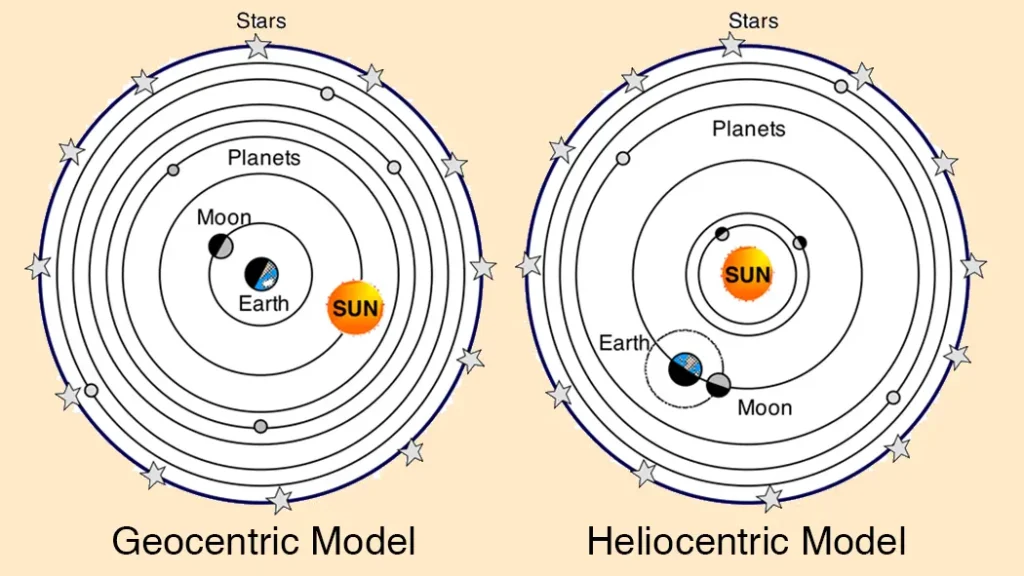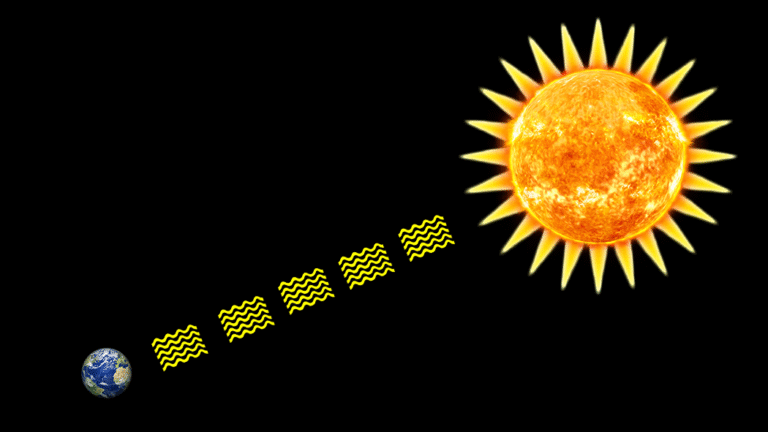Have you ever looked up at the sky and noticed how the Sun rises in the east and sets in the west? Or why the sun seems to move across the sky during the day? This happens every day. But have you ever wondered why? The answer lies in how our Earth moves.
In this post, we will answer a simple but important question: Which way does the Earth rotate? We’ll also look at how this affects us, how scientists figured it out, and why it matters. Everything is explained in a simple way for easy understanding.
What Does “Rotation of Earth” Mean?
Rotation means spinning. Just like a top spins on a table, Earth also spins. But it spins in space. It turns around an invisible line. This line goes from the North Pole to the South Pole. This line is called the axis.
Earth completes one full rotation on its axis in about 24 hours. This rotation is what gives us day and night.
Which Way Does the Earth Rotate?
Earth rotates from west to east. This means it turns in the direction where the Sun rises. If you look at a map or globe, Earth turns counterclockwise when viewed from above the North Pole.
Because of this rotation, the Sun appears to rise in the east and set in the west. But in reality, the Sun is not moving around us. We are the ones moving.

How Do We Know Earth Rotates from West to East?
Even without tools, you can notice the rotation of earth. Stand still in an open space and watch the Sun for a whole day. You will see it move across the sky from east to west. But again, this is just how it looks. It is Earth turning from west to east that creates this effect.
You can also see stars at night move across the sky in the same way. The movement of stars is another sign that the Earth is spinning.
How Did Scientists Learn About Earth’s Rotation?
Long ago, people believed the Sun moved around Earth. This is called the geocentric model. Many ancient cultures followed this idea.
Then came a scientist named Nicolaus Copernicus. In the 1500s, he said that Earth spins and also goes around the Sun. This was called the heliocentric model. At first, people did not believe him. But over time, more scientists found evidence to support his idea.
Another scientist, Galileo Galilei, looked through a telescope. He saw moons moving around Jupiter. This showed that not everything moved around Earth. This was a big clue.

Later, Isaac Newton explained gravity. This helped people understand how planets move and why Earth spins.
One famous experiment that showed Earth’s rotation was done by Léon Foucault in 1851. He hung a heavy pendulum and let it swing. As time passed, the swing direction slowly changed. This proved that Earth was rotating.
Why Can’t We Feel the Earth Rotating?
Earth spins very fast. At the equator, it moves at about 1,670 kilometers per hour (that’s over 1,000 miles per hour). Still, we do not feel this motion. Why?
There are two main reasons:
- Earth spins smoothly. There are no sudden stops or turns. It’s like riding in a fast train that moves without shaking.
- Everything around us spins too. We, the air, the oceans, and even buildings are all moving with the Earth. So we don’t notice the motion.
What If Earth Rotated in the Opposite Direction?
Let’s imagine a different world. What if Earth rotated from east to west instead?
In that case, the Sun would rise in the west and set in the east. Our daily sky would look very different.
Wind patterns and ocean currents would also change. Weather systems would move in the opposite direction. This would change climates and ecosystems in many places.
Even the way planes fly and how satellites move in the sky would be different. Our world would be turned around—quite literally.
What Causes the Earth to Rotate?
Earth has been rotating since it was born about 4.5 billion years ago. Scientists believe the early solar system was full of gas and dust. As this material came together to form planets, the spinning motion began. The reason is simple: when something collapses under gravity, it starts to spin.
This spin has stayed with Earth ever since. There is no air in space to slow it down. So the Earth keeps spinning.
However, it is slowing down very slowly. Each year, Earth’s rotation takes a tiny bit longer. But the change is very small—only about 1.7 milliseconds per century.
What Are the Effects of Earth’s Rotation?
Rotation of Earth does more than just give us day and night. It affects many things in our daily lives.
1. Day and Night
This is the most obvious effect. As Earth spins, different parts face the Sun. The side that faces the Sun has day. The other side has night. When your place on Earth turns toward the Sun, morning begins. As it turns away, night falls.
2. Time Zones
Because Earth is round and spins, different places get sunlight at different times. This is why we have time zones. The world is divided into 24 time zones—one for each hour of the day.
3. Coriolis Effect
Rotation of Earth also causes something called the Coriolis effect. This makes moving air and water turn. For example, winds in the northern part of Earth curve to the right. In the southern part, they curve to the left.
This effect shapes weather patterns, ocean currents, and storm directions. Hurricanes spin counterclockwise in the north and clockwise in the south because of this.
4. Shape of Earth
Earth is not a perfect sphere. It is slightly wider at the equator and flatter at the poles. This shape is caused by the spinning motion. It pulls things outward at the equator.
Can Earth Ever Stop Spinning?
Right now, there is no reason to think Earth will stop spinning soon. But in the far future, it might slow down more.
The Moon is pulling on Earth with its gravity. This pull is slowly slowing Earth’s spin. Millions of years from now, a day on Earth may be longer than 24 hours.
This has already happened with the Moon. Long ago, the Moon spun faster. But now it always shows the same side to us. One day, Earth may do the same with the Moon.
Fun Facts About Earth’s Rotation
- Earth rotates once every 23 hours, 56 minutes, and 4 seconds. But we round it up to 24 hours.
- The fastest part of Earth’s spin is at the equator.
- On the Moon, a day lasts about 29 Earth days!
- If you could see the stars at the same time each night, they would seem to move west a little each day. This is because Earth is also moving around the Sun while it spins.
A Quick Recap
Let’s review what we learned:
- Earth rotates from west to east.
- This rotation gives us day and night.
- It takes about 24 hours for one full spin.
- We do not feel the spin because everything spins with us.
- Rotation affects weather, time, and even the shape of Earth.
- The direction of rotation makes the Sun appear to rise in the east and set in the west.
Ending Notes
Now you know the answer to the question, which way does the Earth rotate. It turns from west to east, giving us day, night, weather patterns, and much more.
It’s easy to forget that we are living on a giant ball spinning through space. We do not feel it, but this motion shapes everything about life on Earth.
The next time you watch the Sun rise or the stars move across the night sky, remember—it is not them moving. It’s Earth turning beneath us.
Understanding rotation of earth helps us better understand our planet, our time, and even ourselves. It reminds us that science is not just facts and numbers. It is a way to see the world in a whole new light.
Let the spin continue!




